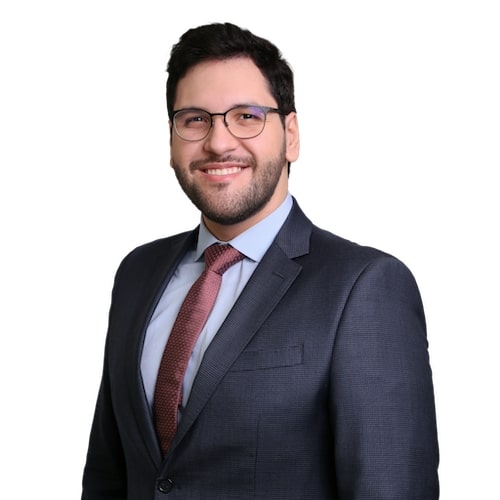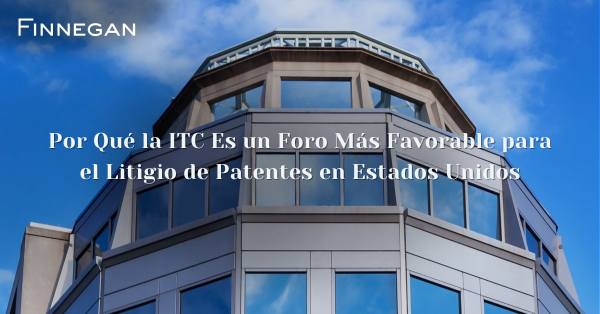Derechos de Autor
Navigating Copyright in the Tik Tok Age: Challenges and Complexities for Artists and Rights Holders
This paper explores the challenges of applying outdated copyright laws to the TikTok Age, using the examples of Brazilian songs "Lovezinho" and "Coração Cachorro" that gained viral popularity on the platform.
By Pedro de Abreu M. Campos, Di Blasi, Parente & Associados
Abstract: This paper explores the challenges of applying outdated copyright laws to the TikTok Age, using the examples of Brazilian songs "Lovezinho" and "Coração Cachorro" that gained viral popularity on the platform. It discusses the need for a modernized legal framework that considers the widespread use of short fragments in content creation and the complexities of the digital era. The paper highlights the inadequacy of current copyright laws, especially in determining authorship and addressing the involvement of AI in creative works. The implications of these issues extend beyond professionals to society as a whole, calling for a reevaluation of copyright laws to foster artistic expression in the digital age.
Introduction
In 2006, Nelly Furtado, Timbaland, and Nate Danja Hills collaborated on the chart-topping hit "Say It Right." Fast forward to 2022, Brazilian artists Treyce and WK released "Lovezinho," a song that bore striking similarities to the Canadian hit. However, it wasn't until 2023 when the digital influencer Xurrasco's infectious choreography to the "Lovezinho" video went viral on TikTok that the song gained significant traction.
Nelly Furtado even joined the hype by dancing to Xurrasco's choreography, adding her own flair to the Brazilian hit. However, according to reports, Sony Music Publishing (Brazil), the rights holder of "Say It Right" in the country, notified the Brazilian artists, demanding recognition of Nelly Furtado, Timbaland, and Nate Danja Hills as co-authors and rightful payment of royalties.
This situation surrounding "Lovezinho" is not uncommon in the Tik Tok Age, where very short videos and its soundtracks spontaneously go viral, gaining commercial relevance unlikely to be achieved at other times. “Lovezinho” is not a lonely case. In 2021, James Blunt accused Brazilian duo Ávine and Matheus Fernandes of alleged plagiarism of his song "Same Mistake" in their viral TikTok hit "Coração Cachorro." The parties eventually reached an agreement in which Blunt was recognized as a co-author and received royalties for the song. Situations like these seem to be getting common.
Instances like "Lovezinho" and "Coração Cachorro" highlight the outdated nature of copyright law, particularly in Brazil, in the Tik Tok Age. The Brazilian copyright system is based on the Berne Convention for the Protection of Literary and Artistic Works, an international agreement from the 19th century when there was no internet, streaming services, social networks, or even vinyl records. The current Brazilian Copyright Act dates back to 1998 when the widespread cultural access facilitated by social networks was unimaginable.
It is important to note that this article does not seek to romanticize antiquated creative processes. The notion that "music is no longer made as before" or that "no one is original anymore" is not supported by reality. Throughout history, artists have always been inspired by those who came before them. For instance, Arctic Monkeys were inspired by Oasis, who drew inspiration from the Beatles, who were influenced by Little Richard, and so on.
Inspiration has been an inherent part of artistic creation throughout history. The challenge lies in distinguishing between common and desirable inspiration that fuels artistic progress and copyright infringement that undermines the rightful interests of artists and rights holders.
When to ask for permission to use a work in the TikTok Age
In Brazil, determining the distinction between simple inspiration and infringement must consider the fact that Brazilian Copyright Law expressly permits the use of "short fragments" from others' works. However, the law and the courts have never precisely defined what constitutes a "short fragment." Consequently, myths have thrived among artists and the industry, such as the belief that "it is permissible to use up to three bars of any song." There is no legal support for this claim.
The fact is that the law fails to precisely define what constitutes a short fragment. Is ten seconds of an eight-minute song a short fragment? And what about ten seconds of a one-minute song? Does it make a difference whether those ten seconds are used in a new 20-second video or in a new two-hour video? These questions remain unanswered in Brazil.
It is true that the Berne Convention includes the so-called three-step test. According to the Convention, "It shall be a matter for legislation in the countries of the Union to permit the reproduction of such works in certain special cases, provided that such reproduction does not conflict with a normal exploitation of the work and does not unreasonably prejudice the legitimate interests of the author."
Hugenholtz and Okediji formulated the three-step test as follows: (i) Limitations can only apply to “certain special cases,” meaning exceptions cannot be overly broad; (ii) Limitations cannot conflict with the normal exploitation of the work, i.e., they cannot rob right holders of a real or potential source of income that is substantive; and (iii) Limitations cannot prejudice legitimate interests, i.e., they cannot do disproportional harm to the rights holders.
The three-step test, even in the more objective formulation of Hugenholtz and Okediji, presents its own challenges due to its vague nature and language. It has always been complicated to determine what can be considered a "legitimate interest" in the face of public interest. However, this challenge becomes more pronounced in the current era where social media is a significant revenue source, making it extremely difficult to determine whether the use of a work in a 10-second TikTok video conflicts with its normal exploitation.
A report by Midia Research reveals that the most successful songs are becoming increasingly shorter in duration. In the year 2000, the average time of songs in the Billboard Top 10 was 4 minutes and 22 seconds. In 2022, nearly 40 percent of the top 10 hits had less than three minutes, compared to only 4 percent in 2016. Furthermore, platforms like TikTok limit videos to even shorter durations, less than 30 seconds.
In the case of "Lovezinho," the Brazilian song spans 2 minutes and 46 seconds. However, imagine if the song contained only the 16 seconds danced by Xurrasco in his viral video. Does it even make sense to think in terms of short or long fragments in an era when the actual time of appreciating a song is less than 20 seconds? Considering this modern approach to music appreciation, does the Brazilian "short fragment" limitation comply with the first step of the Bern test, i.e., is this limitation confined to “certain special cases” now that “short fragments” seem to be the default (or at least a widespread) form of appreciating music, art and mediatic content?
Navigating copyright has always been challenging, but with the transformation of the digital world and cultural access patterns, the issues have become increasingly complex. It is a paradox: at the same time social media and smartphones democratized art and content creation in many ways, it has also created or aggravated complicated legal questions. Obtaining legal advice from the early stages of the creative process seems to be more crucial than ever. Ironically, the very tools that allowed art and content creation to be democratized are now making the act of expressing oneself artistically more expensive, privileged and potentially dangerous in terms of legal consequences. In this context, one can wonder if the Copyright system is still a proper tool to achieve its goal of fostering artistic, scientific, and literary creations, or if it needs significant updates.
From whom to seek permission to use a work in the Tik Tok Age?
The difficulties of applying a 19th Century based system to the Tik Tok Age extend beyond understanding when the use of an excerpt from a work is permissible. It can be challenging to determine whom to seek permission from, especially in a droit d’auteur tradition where the authorship cannot be determined by contracts.
Seventeen years ago, the song "Say It Right," composed by Nelly Furtado, Timbaland, and Nate Danja Hills, involved the collaboration of 10 editors and sub-publishers. Beyonce’s 2022 song “Summer Renaissance” officially credits 13 authors, plus multiple editors, and sub-publishers. This complexity reflects the current phonographic market, where many individuals and companies participate in a production chain that borders on industrialism. This intricate chain, resembling an almost Fordist model, creates a web of complex contracts and unpredictable legal relationships that are difficult to comprehend even for highly specialized lawyers.
Once again, it is evident that the law lacks adequacy – or at least clarity – for the current Tik Tok Age. A system conceived in a distant era of romantic authorship, without a professional recording industry on a mass production scale, struggles to cope with the complexity of modern production and consumption stages. This poses challenges for music professionals and users, such as artists and social media influencers, who want to keep doing what has always been done: create legally by being inspired by other works.
An example of the legislation's inadequacy in relation to the modern music production chain is the absence of a specific legal framework for music producers in Brazilian Law. It is extremely difficult to determine, under Brazilian Law, to what extent Quincy Jones, for example, can be considered a co-author of the album "Thriller." Or, to what extent George Martin co-authored all the Beatles albums.
In Brazil, based on the droit d’auteur tradition, moral rights such as being recognized as the author are irrevocable and inalienable. This means that determining who can be considered the author of a given song cannot be done through contracts. While it is possible to negotiate who will hold the patrimonial rights over the song, determining authorship is more complicated. All authors, even those without any share of patrimonial rights, retain their moral rights for eternity, including the ability to object to any changes to the original work that could harm them. According to Brazilian Law, regardless of any written contracts, determining who should be considered an author or co-author of a song requires assessing their contribution to the final creation.
However, this rule seems to derive from an outdated perspective on music creation for at least two reasons. The first reason is that in a world where musical creation involves numerous professionals, determining the threshold of participation required for an individual involved in production to be recognized as an author becomes challenging. This is another question that current copyright law does not answer clearly, leaving thousands of individuals, such as music producers, at the mercy of often predatory contract negotiations that are frequently challenged in courts due to the irrevocable and inalienable nature of moral rights.
The second reason is that Artificial Intelligence is now vastly used to create artistic, literary, or scientific works. Brazilian Law is clear that only human individuals are authors for the purpose of copyright. However, this is not a conscious decision by lawmakers debating AI, but instead a rule written at a time when Brazil was debating if companies could be considered as authors or not.
Regardless of one’s opinion on the interaction between AI generated work and copyright laws, Public Policy and regulation in a constitutional democracy (such as Brazil) must derive from public debates in the political arena and civil society, not from coincidence. The fact that Brazilian Law expressly determines that only humans are authors is not a conscious decision considering AI creations, but a coincidence which derives from a different debate that took place in a different context and Era.
The Brazilian romantic perspective of determining who should be considered an author or co-author of a song based on their contribution to the final creation also seems to be an accidental solution to the use of AI systems as a tool by human authors. Even so, multiple questions and debates arise: is it even possible to determine in previous and general terms what is the exact amount of contribution that a human must incur to be considered an author? How does copyright laws apply to the work used by AI systems to learn and to generate a new work – or even to be used as a took by a human author?
Terms and Conditions May Apply
In addition to the complexities of determining when and from whom to seek permission to use and transform works, the TikTok Age also coexists with a consolidated globalization process. This introduces yet another layer of complexity by incorporating Terms and Conditions based on the Copyright Laws of the platform's originating country.
Terms and Conditions are typically enforced automatically by each platform's codes, making them a significant regulatory force applicable to all users. Lawrence Lessig's concept of "code as regulation by architecture" suggests that the design and structure of software code and technological systems can effectively regulate and control human behavior. According to Lessig, these digital architectures, or codes, possess the power to shape and influence how individuals interact within a given system or platform.
Rather than relying solely on traditional legal regulations and policies, Lessig argues that the architecture of digital systems, including software code, algorithms, and user interfaces, can enforce rules and constraints on users' actions. These technical constraints act as a form of regulation, as they define the possibilities and limitations of user behavior within a specific technological environment.
Lessig's concept emphasizes the significance of understanding how the design and functionality of digital platforms and technologies can shape user behavior and societal norms. It underscores the need to consider the impact of these architectures on privacy, intellectual property rights, and freedom of expression. By recognizing the regulatory power embedded in code, policymakers and designers can work towards creating digital systems that align with desired social values and objectives.
The global application of platforms' codes based on their home countries creates complicated tensions, as seen in the US Congress' attempt to ban TikTok, a Chinese platform, from the country. Each country has its own rules regarding how private written Terms and Conditions interact with local legislation. However, even without considering geopolitical tensions arising from conflicts between local copyright rules and private companies' Terms and Regulations, applying the same rules on a global scale can be highly problematic.
In Brazil, although Terms and Conditions are legally binding, they are subject to specific rules that favor a pro-user interpretation due to their nature as adhesion contracts. Nevertheless, in reality, platforms Terms and Conditions are imposed to the Brazilian users, even when in conflict with local legislation.
For example, many platforms' Terms and Conditions incorporate a logic based on Copyright's Common Law system of "Fair Use." However, in Brazil, there is no exact analogue to the Common Law "Fair Use." Instead, limitations to Copyright Law are provided for in Law 9.610/96, but not exhaustively. The courts often recognize unauthorized uses based on the application of direct constitutional rights, including equal access to education and culture, artistic freedom, and freedom of expression. Additionally, the Berne Convention, which includes the "three-step test," applies in Brazilian territory to assess whether a work can be used without authorization.
The Brazilian Legislation expressly foresees limitations such as transformed works that replicate and modify the content of a previous work, accompanied by comments or new ideas; quotations and epigraphs, where a small excerpt is reproduced for the purpose of study, criticism, or controversy; and parodies that are not necessarily comedic, among others.
While there are similarities between the Brazilian system of limitations to Copyright Law based on the Brazilian Constitution and the Common Law system of "fair use," a significant distinction exists between the two. The "fair use" system has an "econocentric" nature, focusing on the economic effects of using the original work on its titleholder. In contrast, the Brazilian system of limitations is rooted in constitutional rights that extend beyond a purely economic analysis, encompassing existential rights such as human dignity in its dimensions of equality, freedom, solidarity, and psychophysical integrity. Therefore, in Brazil, the scope of Copyright Law needs to address the multiple interests affected by the exclusivity of use on a case-by-case basis. Unfortunately, most platforms do not consider this complex Brazilian theory in their operations.
Considering the nature of platforms like YouTube and TikTok, governed by "Regulation by Architecture" as suggested by Lawrence Lessig, it is evident that sometimes the regulations of these platforms undermine local legislation and subject local citizens to regulations from other countries. This not only presents legal and constitutional problems but also raises concerns about threats to sovereignty. Content creators and artists who express their work on such platforms often lack the knowledge and resources to engage in legal battles against these foreigner companies, underscoring the need for a debate not only on updating Brazil's copyright laws but also on finding solutions to the intricate web of copyright in this globalized TikTok Age.
Conclusion
The obsolescence of Copyright Law to the Tik Tok Age not only affects professionals involved in the creative process but also society as a whole and even nations. Identifying the true authors of a song is crucial in determining whom to seek permission from. This also supports the concerns that artistic, literary and scientific expression is now on the edge of the already mentioned paradox: while social media, AI, and the digital era in general have made artistic and content creation democratic, the Law’s failure to keep up with social and technological changes makes virtually impossible for an individual without legal counsel to determine when and from whom seek permission to use or transform a previous creation. If that it is true, it is urgent to rethink whether Copyright Laws as written today, both in national and international scopes, are indeed capable of reaching its original purpose.
In conclusion, the rise of viral content on platforms like TikTok has exposed the inadequacy of copyright law, particularly in the case of music, in the modern digital age. The examples of "Lovezinho" and "Coração Cachorro" highlight the challenges faced by artists, rights holders, and the legal system in determining the boundaries between inspiration and infringement. The outdated nature of copyright law, especially in Brazil, which is based on conventions from a bygone era, fails to address the complexities of today's cultural landscape shaped by social media, streaming services, and the rapid dissemination of content. The lack of clear definitions and guidelines regarding the use of fragments and the determination of authorship further compound the issue, leaving creators and users grappling with legal uncertainty.
Furthermore, the evolution of music production and consumption patterns presents additional complexities for copyright law. The intricate web of contracts and collaborations involved in modern music production, with multiple authors, editors, and sub-publishers, challenges the traditional notion of authorship and even co-authorship. In addition, the emergence of artificial intelligence as a tool for creative expression raises new questions about the legal status of AI-generated works and the role of humans in the creative process.
The complexities in seeking permission to use and transform works are exacerbated by the incorporation of Terms and Conditions based on the Copyright Laws of the platform's originating countries. These Terms and Conditions, enforced by platform codes, act as a regulatory force for all users. Lawrence Lessig's concept of "code as regulation by architecture" highlights how the design and structure of digital systems can shape user behavior and societal norms, emphasizing the need to consider their impact on privacy, intellectual property rights, and freedom of expression. The global application of platform codes creates tensions, seen in the conflict between local legislation and the rules imposed by foreign platforms. In Brazil, Terms and Conditions favor a pro-user interpretation, but platforms often disregard local legislation. The Brazilian system of limitations to Copyright Law, rooted in constitutional rights, differs significantly from the Common Law "fair use" system, focusing on economic effects.
Although focused on a Brazilian example, it is likely that IP Law practitioners from around the globe will identify similarities with the criticism express in this brief article. The current copyright system, rooted in a romantic perspective of authorship, struggles to adapt to these changes and protect the rights and interests of all parties involved. It is evident that copyright law requires significant updates and a comprehensive reevaluation to ensure its relevance and effectiveness in fostering artistic progress while balancing the interests of creators, rights holders, and the public.





